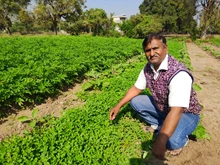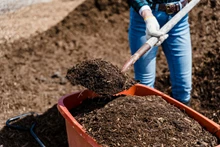
The rise in the price of jeera was a pleasant surprise for farmers who didn’t want to let go of the opportunity. The economically weak jeera growers sold their crops to make fortunes. But, the rising prices of jeera was not a fluke.
The farmers who were well-off and had exposure to the understanding of jeera fundamentals, in general, held their crop for some more time. Even a common jeera farmer in Gujarat knew that the sowing area under jeera cultivation went down as compared to previous years. Village on village it was obvious as many farmers shifted to other crops.
“Many farmer members of our FPO left sowing jeera in the past 1-2 years as they found other crops more beneficial from a pricing point of view,” said Nayan Myatra, CEO of Anjar FPC from Bhuj District in Gujarat.
Government data too validates this observation. The production of jeera has been falling for the last two seasons. The output of jeera was pegged around in the 2020-21 crop year when the jeera production was estimated at 450,000-475,000 tonnes, which was 20% lower than the previous year. In 2021-22, the output fell sharply by 35% to around 300,000 tonnes.
It was expected that the current year’s crop will be near record due to a sharp spike in prices at the time of sowing in October-November 2022. However, a shift to more remunerative crops and bad weather foiled hopes of a bumper crop posting only a minor rise to 310,000-320,000 tonnes in 2022-23. Though the crop was a bit higher than the previous year, it was 40% lower than the average crop of 500,000 tonnes in the past years.
Unseasonal rains, hail, and frequent variations in temperatures in Rajasthan and Gujarat in February-March have had an adverse impact on the yield of jeera in many areas. A three-year low carryover stock of 50,000-60,000 tonnes further pressurized the suppliers of jeera. Concerns over the Al-Nino effect on monsoon also deepened the uncertainty on the future supply situation which subsequently gave the price a fillip northward.
“Average yield for jeera is 4-5 quintals per acre. Last year, farmers got around Rs 150 per kg, but this time they have sold at higher prices. The average price realization has been in the range of Rs. 250-400 per kg,” told Karshan Bhai Jadeja, Chairman of Banas FPO at Radhanpur, Gujarat. “And, the farmers with land holding of 10 acres or more have literally become crorepatis.”
The after-effect of such a bumper profit to farmers is that the sowing area of jeera is set to buck the previous trend next year. “Farmers who had left jeera in favour of other cash crops are feeling depressed. They all will sow jeera this year we will see a significant jump in the sowing area of jeera this coming season,” said Myatra.











